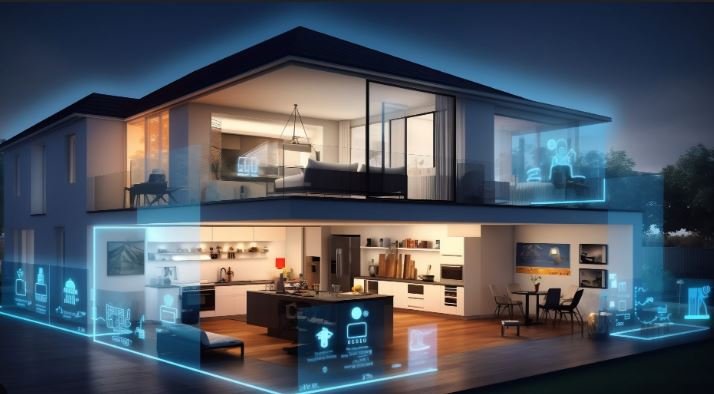Tech Integration and Smart Homes
Smart homes leverage advanced technologies to automate and control household functions, enhancing convenience, energy efficiency, and security. This article explores the integration of technology in modern homes, transforming daily living experiences.

Components of a Smart Home System
Home Automation Devices
Smart home devices include voice-activated assistants (e.g., Amazon Alexa, Google Assistant), smart thermostats, lighting controls, security cameras, and connected appliances. These devices enable remote monitoring, energy management, and personalized settings.
Internet of Things (IoT) Connectivity
IoT technology connects smart devices to a centralized system, enabling communication and data exchange. Interoperability among devices allows seamless integration and control through mobile apps or voice commands.
Benefits of Tech Integration in Smart Homes
Enhanced Convenience and Comfort
Automation simplifies daily routines by scheduling tasks, adjusting settings based on preferences, and providing remote access to home functions. Voice control and intuitive interfaces streamline interactions, improving user experience.
Energy Efficiency and Sustainability
Smart technologies optimize energy consumption by monitoring usage patterns, adjusting HVAC systems, and regulating lighting levels based on occupancy. Energy-efficient appliances and automated systems reduce utility costs and environmental impact.
Security and Safety Features
Remote Monitoring and Surveillance
Smart home security systems include cameras, motion sensors, and doorbell cameras with real-time alerts and video monitoring. Integrated security protocols and encrypted data ensure privacy and protection against intrusions.
Automated Safety Systems
Smoke detectors, carbon monoxide sensors, and water leak detectors integrate with smart home systems to provide early warnings and emergency notifications. Automated responses and alerts enhance home safety and minimize risks.
Challenges in Tech Integration for Smart Homes
Compatibility and Interoperability
Ensuring compatibility among diverse smart devices and platforms requires standardized protocols and interoperability testing. Seamless integration prevents technical issues and enhances system reliability.
Data Privacy and Security Risks
Protecting personal data from cyber threats and unauthorized access is crucial in smart home environments. Implementing robust security measures, encryption protocols, and regular updates mitigate risks and safeguard user information.
Examples of Tech Integration in Smart Homes
- Nest Learning ThermostatThe Nest thermostat learns user preferences and adjusts heating and cooling settings for energy efficiency and comfort, accessible via smartphone apps and voice commands.
- Ring Video DoorbellRing doorbell cameras provide motion-activated alerts, two-way audio communication, and video monitoring of front door activity, enhancing home security and remote surveillance.
Future Trends in Smart Home Technology
Artificial Intelligence (AI) and Machine Learning
AI algorithms analyze data to predict user behavior, optimize energy usage, and automate household routines. Machine learning enhances smart home responsiveness and personalization based on user habits.
Integration with Smart Cities and IoT Ecosystems
Smart homes will connect with broader IoT ecosystems and smart city initiatives, promoting urban sustainability, energy efficiency, and collaborative infrastructure solutions.
Conclusion: Embracing Smart Home Innovation
Tech integration transforms traditional homes into intelligent, connected environments that prioritize convenience, efficiency, and security. By adopting smart technologies, homeowners enhance quality of life and contribute to sustainable living practices.
Takeaways: Key Insights
- Smart homes integrate technology for convenience, energy efficiency, and security.
- Challenges include compatibility issues and cybersecurity risks.
- Future trends focus on AI, IoT integration, and smart city connectivity in residential environments.
As smart home technology evolves, the potential for enhancing everyday living experiences and shaping sustainable lifestyles continues to expand, driving innovation and efficiency in residential design and functionality.



